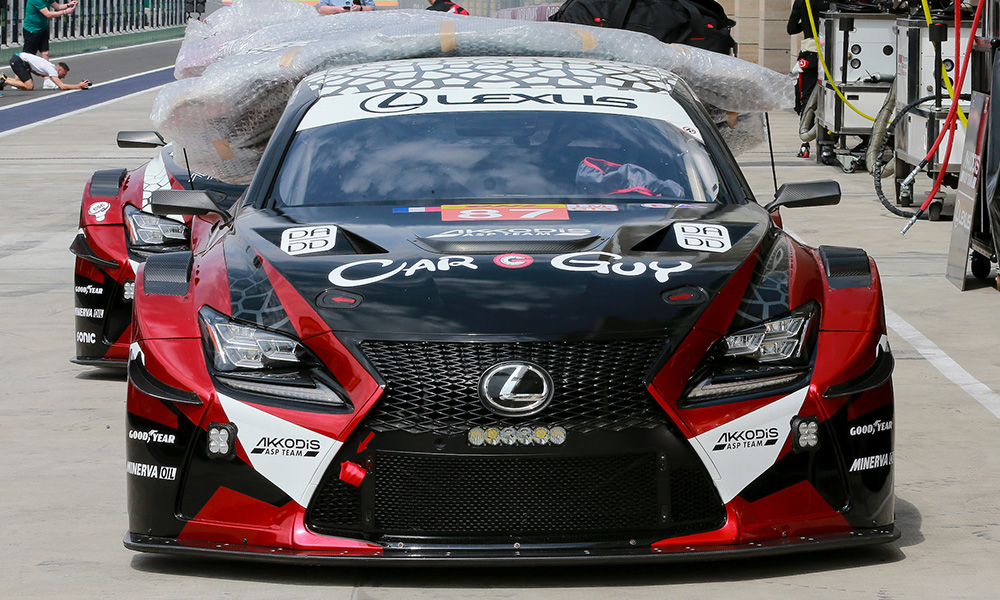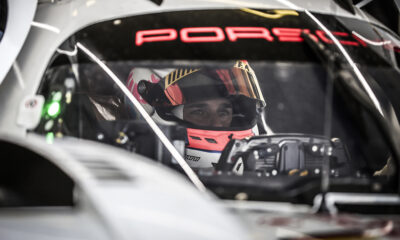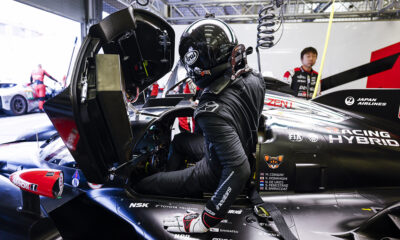
Photo: MPS Agency
Aerodynamic changes and electronic updates have been the main areas of focus to put the Lexus RC F GT3 in the LMGT3 performance window for its FIA World Endurance Championship debut according to Akkodis ASP Team boss Jerome Policand.
Policand, whose Auto Sport Promotion outfit will be running the two cars for the Japanese luxury brand’s debut season in the world championship, told Sportscar365 that there have been no changes to the mechanical platform, despite the Lexus being the class’ oldest car.
The car debuted in 2017 and saw action on multiple continents, racing in Fanatec GT World Challenge Europe powered by AWS with Emil Frey Racing and later Tech1 Racing, although it hasn’t been an active contender in Endurance Cup since the conclusion of the 2020 season.
It has remained active in the U.S. and has even been a championship winner there, as Jack Hawksworth and Ben Barnicoat steered a Vasser Sullivan-run RC F GT3 to the IMSA WeatherTech SportsCar Championship GTD Pro title last year.
Despite its age, however, Policand told Sportscar365 that “mechanically, the car is the same.”
Instead, the bulk of the work has focused on aerodynamics, development of which was carried out in collaboration with Toyota Gazoo Racing Europe.
“In WEC you have an aero window which is mandatory for all the GTs so you have to stay on this window,” Policand said.
“Because this car has been designed in 2015 it was not completely in the [the WEC’s performance] window. Maybe the new cars like the BMW and Ferrari were already in this window but we are not.
“The modification was the job of TGR because they work quite well in the wind tunnel.
“We changed the front splitter, a bit the front bumper, the rear fender, a bit the rear wing and also the side skirt was changed a bit.
“If you look at the car it’s not massive. If you compare [it to] the car in IMSA, you need to take a right picture. But roughly we have less downforce and less drag.”
Aero development was carried out through multiple test outings, most notably in Portimao and Barcelona.
Akkodis ASP’s Lexus first broke cover during the October Goodyear tire test at the Autodromo Internacional do Algarve, where Jose Maria Lopez was joined by WeatherTech Championship driver Hawksworth.
“We tested at Barcelona, we tested at Portimao and all of the spare parts were prototypes,” Policand said.
“And then at Christmas time we had to produce the new spares in carbon to be homologated. That means in terms of the splitter we have only one spare, so it’s a bit tight, but at the end the car is fully homologated.”
Policand revealed that ASP currently has a fleet of three RC F GT3s at its disposal, with the late testing work and the FIA homologation done with a separate chassis.
This was needed because the team, one of several to get caught up in logistical dramas with delayed sea freight ahead of Monday’s Prologue, faced a very tight schedule in terms of homologation and preparation.
“We have a third car in Europe, with which we tested at Paul Ricard,” said Policand.
“Because we have no knowledge of the car, it was useful to keep the car at the workshop, to test the aero because it was a car which had been used for the Sauber wind tunnel for the FIA.
“The slot was Jan. 15 and the slot to start the container was Jan. 15.”
As Policand outlined on Sunday, the team also faced work on development of electronics as well as additional FIA-required data loggers, which were tested with the third car at the Albi airfield in France early last week.
The Frenchman noted that the team ‘started from zero’ with Lexus after years of successfully racing Mercedes-AMGs, using the tests in Spain and Portugal as a valuable opportunities to gain a greater understanding on the car.
“Roughly what we did during winter tests at Barcelona and Portimao, it was more to learn the car,” Policand said.
“Working on the setup and the tools. Because we we start from zero and most of the cars came from Japan and they have to be rebuilt because they didn’t run a track since two or three years.
“It’s not like a new car, this car where we also have the spares package and so on.
“That’s the reason we concentrate on the third car, the spare car to to make all the tests on electronics and FIA rules, the wind tunnel and hopefully we have all the data loggers now to put in the race car and I hope it will work.”























